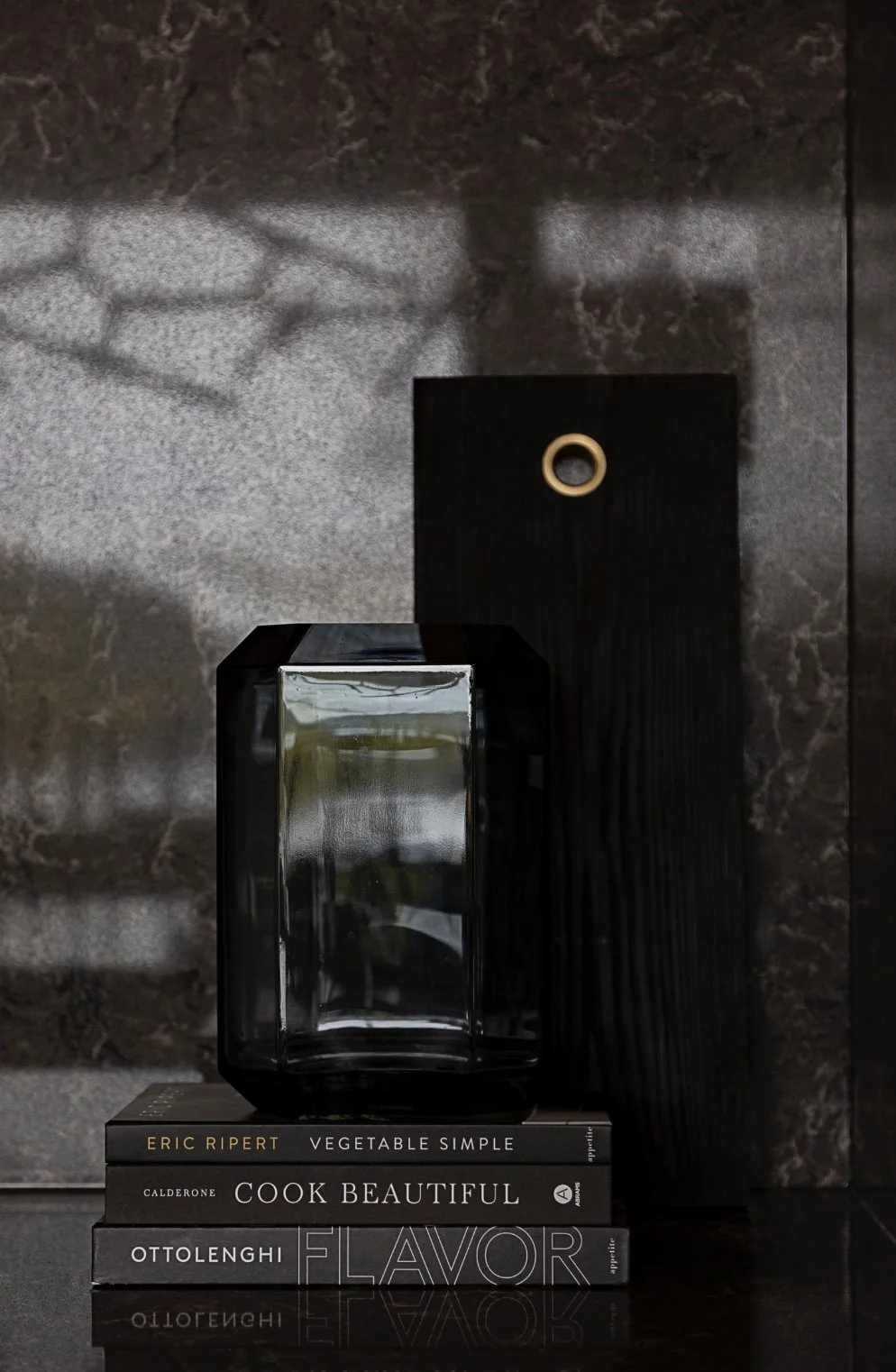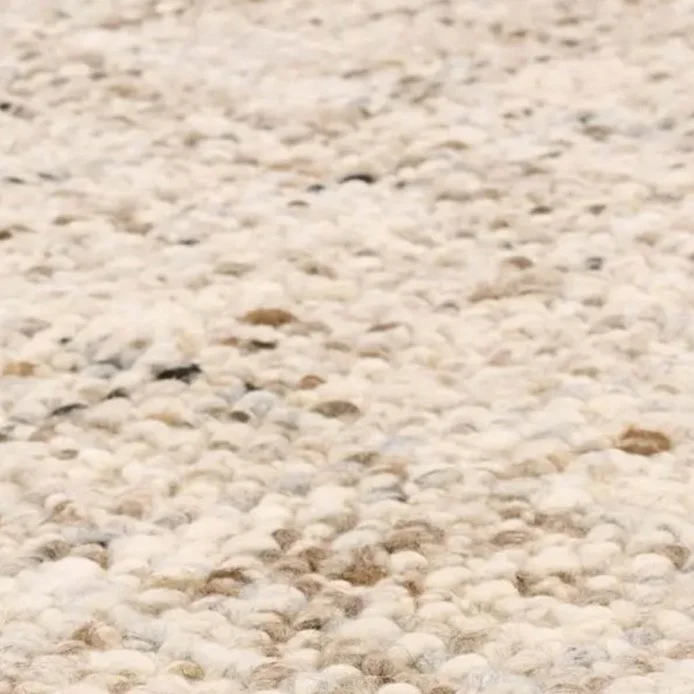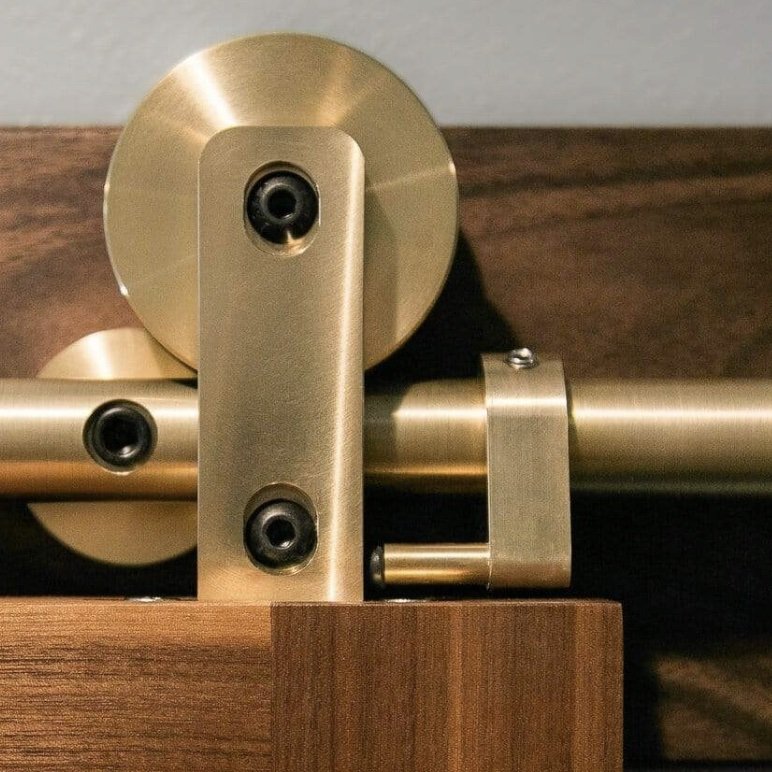Your Guide to All Things Texture
WOVEN
COUNTERS
PANELS
PLASTER
CARPET
PAPER
GLASS
CONCRETE
METAL
WOOD
STONE
LEATHER
TOP 12 MATERIALS & HOW TO USE THEM
What they provide, and how to integrate them with one another.
Fabrics (Soft & Versatile)
What They Provide:
Softness and comfort, making a space feel cozy and inviting.
A wide range of textures, from smooth and sleek to plush and tactile, offering endless possibilities for layering and contrast.
The ability to add color, pattern, and depth to a room, whether through upholstery, curtains, pillows, or throws.
Flexibility to change the look and feel of a room seasonally or with simple updates.
How to Integrate & Combine:
Play with colour and pattern: Use fabrics to introduce bold colours or intricate patterns in an otherwise neutral room. A patterned textile—whether on throw pillows, curtains, or rugs—can instantly elevate a space without overwhelming it.
Pair with other textures: Fabrics like cotton, linen, or velvet can be paired with harder materials (e.g., glass, metal, or wood) to balance softness with sleekness. For example, a velvet chair next to a marble side table creates an elegant contrast.
Combine soft and tactile fabrics: Mix tactile fabrics like chenille or faux fur with smooth, simple ones like cotton or silk to create a layered, tactile experience. This works well in spaces like bedrooms or living rooms where comfort is key.
Smooth Countertop Materials (Polished & Luxurious)
What They Provide:
A sleek, refined look that adds a sense of luxury and sophistication to a space.
A smooth, polished surface that’s visually calming and perfect for creating clean, modern lines.
Durability and ease of maintenance, especially with materials like quartz.
Natural beauty with unique veining (in marble) or speckled patterns (in granite and quartz) that add depth and subtle character.
How to Integrate & Combine:
Pair with contrasting textures: Combine smooth countertop surfaces with rougher textures such as reclaimed wood cabinetry, exposed brick, or woven textiles for a balanced mix of polished and organic.
Incorporate minimalist furniture: Smooth countertops like quartz, marble, or granite work beautifully with simple, clean-lined furniture, allowing the countertops to shine as the statement piece of the room (e.g., a marble kitchen island with sleek, modern stools).
Use in kitchens and bathrooms: Whether in the kitchen, bathroom, or even as a statement piece in a bar area, these smooth surfaces can create an elegant focal point that compliments other high-end materials like metal or glass.
Highlight with lighting: Under-cabinet lighting or pendant lights above a quartz countertop can bring out the natural beauty of its surface, emphasizing the smooth texture while adding warmth and glow.
Geometric or 3D Wall Panels (Bold & Modern)
What They Provide:
A contemporary, eye-catching texture that creates visual interest and dimensionality.
Adds drama and sophistication, perfect for accent walls or to create focal points in a room.
Offers a modern take on traditional wall treatments, with options ranging from sleek 3D patterns to more organic, sculptural designs.
How to Integrate & Combine:
Combine with minimalist or neutral furniture to allow the 3D texture to stand out as a feature in the room.
Pair with soft lighting to cast interesting shadows and emphasize the texture’s depth.
Mix with natural textures like wood or stone for a balanced contrast between the hard-edged geometry and more organic materials.
Plaster, Lime WASH, & Stucco Finishes (Textural & Weathered)
What They Provide:
A timeless, artisanal texture that adds depth and warmth to walls.
Creates a weathered, Mediterranean or rustic aesthetic, ideal for bringing character to a space.
Works well in creating a distressed or "lived-in" feel, with subtle imperfections adding charm.
How to Integrate & Combine:
Combine with simple, minimal furnishings to juxtapose the raw, organic feel of plaster with clean, contemporary lines.
Use as a colour wash in an entire room to add warmth while keeping the space neutral.
Pair with other tactile materials like woven baskets, wood, and linen for a well-rounded, rustic interior.
Carpet & Rug Textures (Soft & Grounding)
What They Provide:
Softness underfoot and warmth, making a space feel cozier.
Adds pattern, color, and comfort to any room.
Helps absorb sound, making a space quieter and more inviting.
How to Integrate & Combine:
Layer rugs with different textures and sizes for a dynamic look (e.g., a shaggy rug layered with a flatweave rug underneath).
Mix contrasting textures, such as a plush carpet with smooth hardwood floors.
Use in any room, from living areas to bedrooms, to create texture contrast and anchor your furniture.
Wall Coverings (Patterned & Textured)
What They Provide:
A variety of visual textures, from geometric patterns to textured grasscloth, cork, or linen wall coverings.
The ability to add dimension to walls without the need for paint.
A luxurious touch to elevate the walls and create a sense of depth.
How to Integrate & Combine:
Mix patterned wall coverings with simple, solid colours in other materials like fabric or leather to create balance.
Use textured wall coverings (such as grasscloth) to add natural warmth in contrast to sleek, modern furniture.
Combine with soft lighting to accentuate the texture and create an inviting atmosphere.
Glass Textures (Light & Airy)
What They Provide:
Transparency, lightness, and the ability to open up space.
Clean, modern aesthetics with a sense of elegance and sophistication.
Reflects light and creates a sense of expansiveness.
How to Integrate & Combine:
Combine with metal or wood for a more layered, multidimensional look (e.g., glass shelves with a wooden base).
Pair with soft fabrics like linen curtains or silk cushions to contrast its sleekness.
Incorporate in furniture pieces, such as glass-top tables or shelving, to maintain a light and airy feel.
Concrete Textures (Industrial & Bold)
What They Provide:
A raw, unfinished look that adds character and edge to a room.
Strength and solidity with a contemporary, industrial vibe.
Roughness that contrasts with more delicate textures.
How to Integrate & Combine:
Pair with softer materials, like plush fabrics or wood, to soften its rawness (e.g., a concrete coffee table with a boucle sofa).
Mix with glass or metal for an urban, industrial look.
Use in flooring, countertops, or statement furniture pieces.
Metal Textures (Sleek & Modern)
What They Provide:
A reflective surface that adds light and shine to a room.
Adds an industrial or contemporary flair to a space.
Creates sharp contrasts with soft textures like fabric and wood.
How to Integrate & Combine:
Use in lighting fixtures, frames, and hardware (e.g., brass light fixtures with a cream wood kitchen).
Pair with natural elements like wood or stone for a balanced mix of organic and industrial textures.
Integrate in small accents, such as metallic side tables, or large items like custom metal and glass doors..
Wood Textures (Natural & Grounding)
What They Provide:
A sense of warmth, nature, and organic balance.
Visual richness through natural grains and finishes.
Depth and character, particularly in natural or reclaimed wood.
How to Integrate & Combine:
Pair with metal or glass for a more modern, industrial feel (e.g., wood shelving with steel brackets).
Layer with fabrics for a cozy, rustic vibe (e.g., a wood coffee table with a soft woven rug).
Use in furniture, flooring, and accent walls to bring in natural texture, and balance with other materials like stone or leather.
Stone & Marble Textures (Elegant & Timeless)
What They Provide:
Luxury, sophistication, and a sense of permanence.
Coolness and smoothness, often contributing to a more refined atmosphere.
A natural beauty with unique patterns (veining in marble, ruggedness in stone).
How to Integrate & Combine:
Combine with wood for a balanced mix of natural textures (e.g., marble countertops with wooden cabinetry).
Pair with soft fabrics like linen or wool to contrast the hardness of stone.
Use as statement pieces, such as a marble coffee table or stone fireplace surround.
Leather Textures (Rich & Stylish)
What They Provide:
A sense of luxury, sophistication, and timelessness.
Softness that becomes more comfortable with age, creating depth over time.
Adds a polished, high-end touch to furniture and accessories.
How to Integrate & Combine:
Combine with softer fabrics like velvet or linen to balance its sleekness.
Mix with metals and wood for a modern yet classic look (e.g., leather chairs with a wooden dining table).
Use in furniture, like sofas or accent chairs, or accessories like ottomans and cushions.













